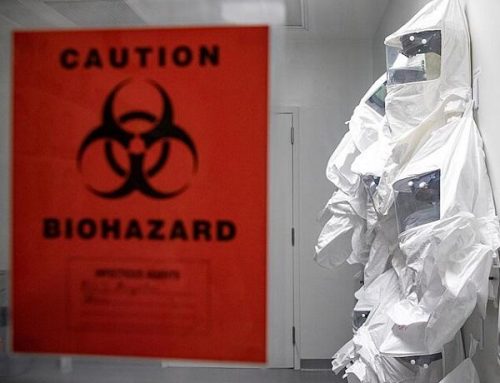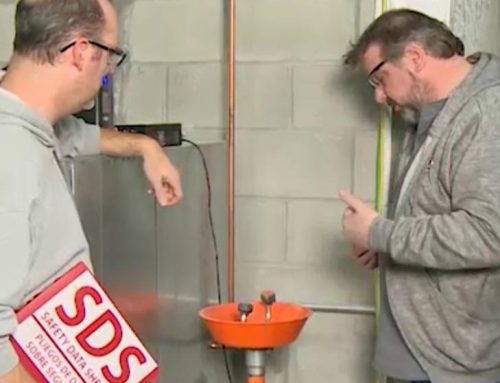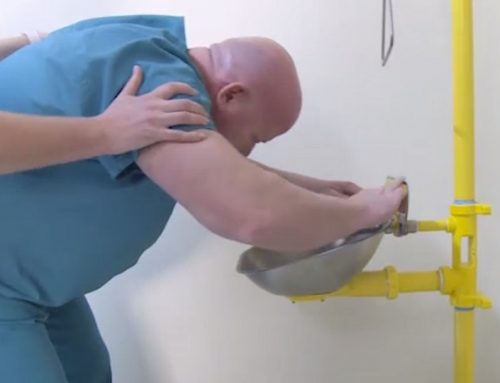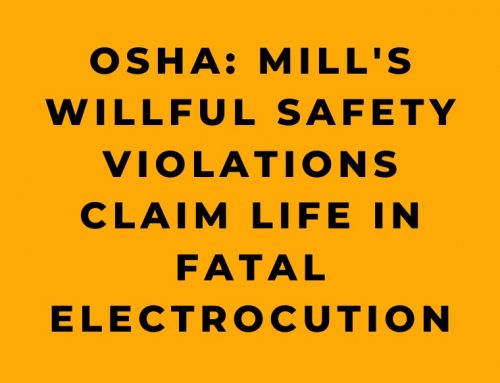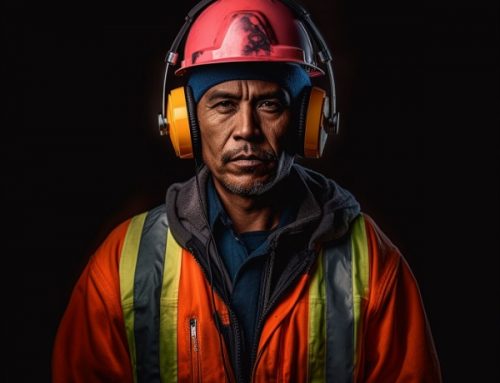Personal protective equipment (PPE) is a critical component of any effective workplace safety program. PPE acts as a barrier between hazards in the work environment and the body, helping to reduce employee exposure to these hazards and prevent workplace injuries and illnesses. According to data from the Bureau of Labor Statistics, nearly 3 million nonfatal workplace injuries and illnesses were reported in the United States in 2019. Proper selection and use of PPE can significantly reduce this number.
This comprehensive guide to personal protective equipment is based on an online training course on OSHA’s PPE standards. It will provide an overview of the different types of PPE, discuss OSHA’s requirements for PPE, and cover key information on selecting, using, and maintaining PPE. With the right PPE and training, employees can stay safe and protected while performing hazardous jobs.
Why PPE is Necessary
PPE is designed to create a barrier between the wearer and workplace hazards. It acts as the last line of defense when engineering controls and safe work practices are not sufficient to eliminate a hazard. Examples of situations where PPE is necessary include:
- Hazardous procedures such as working on assembly lines, performing maintenance work, construction activities, and more that pose risks for injuries.
- Environmental hazards like noise, falling objects, dangerous contaminants, and open pits that require protection from physical injuries.
- Chemical hazards from substances that could cause immediate injury through contact or ingestion, or lead to long-term illness.
- Radiological hazards from exposure to radiation sources found in healthcare, industrial plants, and other work environments.
- Mechanical irritants including sharp surfaces that could puncture, cut, or abrade the skin.
Wearing appropriate PPE consistently and correctly can significantly reduce the potential for workplace injuries and occupational illnesses in these situations.
OSHA’s PPE Standards
To protect America’s workers from harm, the Occupational Safety and Health Administration (OSHA) has implemented enforceable PPE standards under 29 CFR 1910 Subpart I. These standards state that:
- Employers must conduct a hazard assessment to identify hazards that require PPE use.
- Employers must provide PPE to employees at no cost.
- PPE must be selected based on the hazards identified through the hazard assessment.
- PPE must properly fit each employee.
- Employees must be trained on the proper use, care, and limitations of their PPE.
- PPE must be inspected, maintained, and replaced as needed to preserve its effectiveness.
Complying with OSHA’s PPE standards is mandatory for covered employers. Failing to provide appropriate PPE and training can result in citations, fines, and increased risk of harm to employees.
Selecting Appropriate PPE
Choosing the right PPE for the hazards present is critical for safety. When selecting PPE, considerations include:
- The nature of the hazard and risk for injury – Is it chemical, radiological, mechanical, environmental? What body parts are at risk? This determines the type of PPE needed.
- Frequency and duration of exposure – Occasional brief exposure may require different PPE than constant exposure over a full shift.
- Environment and working conditions – Temperature, atmospheric conditions, confined spaces, and the physical demands of the task must be accounted for in choosing PPE.
- Fit – PPE must fit properly to provide protection. Most PPE is available in a range of sizes.
- Comfort and compatibility – Workers are more likely to wear PPE consistently when it is comfortable and compatible with other required gear.
- Industry standards – PPE must comply with applicable ANSI, ASTM, NIOSH and other consensus standards for performance and testing.
Employers should reassess hazards periodically or when conditions change to confirm PPE selections remain protective for current risks.
Types of PPE
There are many types of PPE designed to protect different parts of the body from varied hazards. Key categories of PPE include:
Head Protection Hard hats are one of the most familiar types of PPE, worn widely in construction, manufacturing, and other industries. Hard hats have rigid shells that provide protection from impact, penetration, electrical shock, and burns. Key points on head protection include:
- Ensure proper fit – Hard hats come in sizes ranging from 6 to 8, with adjustable suspension systems to customize fit. A properly-fitted hard hat stays centered on the head.
- Assess electrical hazards – Hard hats must meet ANSI and OSHA requirements for electrical performance. Metal hard hats should not be used around electrical hazards unless designed for that purpose.
- Look for damage – Inspect for dents, cracks, penetration or other damage before each use. Replace if damaged according to manufacturer’s guidelines.
- Accessorize as needed – Attachments like faceshields, ear muffs, and lamps can be added. Ensure accessories do not negatively affect protection.
- Replace routinely – Hard hat shells and suspensions degrade over time. Typical replacement schedule is every 2-5 years.
Some workers may use bump caps, which only protect against bumps and minor scrapes to the head. Bump caps should not be used as a substitute for hard hats in heavy construction or industrial settings.
Eye and Face Protection Eye injuries are extremely common in the workplace but also highly preventable with proper eye protection. Options for protecting the eyes and face include:
- Safety glasses – Protect against frontal impacts from particles. Glasses should have side protection or side shields meeting OSHA standards.
- Goggles – Form a tight seal around the eyes and protect from dust, splashes, and irritants coming from multiple directions. May fit over prescription lenses.
- Face shields – Full face shields protect the face and neck from chemical splashes, sparks, and other hazards. Should be used with safety glasses or goggles for full protection.
- Welding shields – Protect eyes and face from intense ultraviolet and infrared light emitted during welding. OSHA-approved lense shade numbers indicate level of protection.
- Prescription safety eyewear – For those requiring corrective lenses, prescription safety glasses and goggles are available.
Proper fit, marking, lens coatings, and impact resistance should be confirmed before purchasing eye and face protection. Improperly fitted or inadequate eyewear can be as dangerous as no eyewear in many situations.
Respiratory Protection
Airborne contaminants can enter the body through inhalation, making respiratory protection critical in many industrial, chemical, manufacturing, and construction environments. There are three main types of respirators:
- Disposable masks – Filter out dusts and other particulates. Limited effectiveness compared to other respirators.
- Air-purifying respirators (APRs) – Use interchangeable filter cartridges to remove specific airborne hazards before inhalation. Half or full facepieces available.
- Supplied air respirators (SARs) – Provide clean air from an uncontaminated source, protecting against extremely hazardous or oxygen-deficient atmospheres. Self-contained and airline versions are common.
Proper selection, fit testing, training, maintenance, and use of respirators is mandated by OSHA’s Respiratory Protection standard. Reach out to your safety manager before purchasing or using respiratory PPE.
Hand Protection
Hands perform almost all physical job tasks, making hand protection one of the most critical forms of PPE. Types of protective work gloves include:
- Durable gloves – Made from leather, canvas, or other rugged materials. Protect against abrasions, cuts, and heat. Useful for construction, manufacturing, and maintenance tasks.
- Chemical gloves – Made from rubber, neoprene, vinyl or other materials resistant to chemicals. Essential when handling corrosive, toxic, or irritating substances.
- Cut-resistant gloves – Protect hands from contact with sharp objects. Made of materials like Kevlar®, or incorporate steel meshes or fibers. Useful when working with knives, broken glass, sheet metal or other sharp tools and materials.
- Insulating gloves – Provide protection from electrical shocks. Rubber insulating gloves should meet ASTM and OSHA standards for electrical testing. Frequent inspection is critical.
Proper fit allows maximum dexterity and grip strength while preventing hand fatigue. Consider work being performed and discuss options with your supervisor to select appropriate hand protection.
Foot and Leg Protection
Feet are vulnerable to many common workplace hazards, including falling objects, rolling carts, slippery surfaces, sharp objects, and corrosive or hot materials. Options for foot and leg protection include:
- Safety shoes/boots – Protect feet against compression and impact forces from objects or equipment. Steel or composite toes and puncture-resistant soles are common. Additional insulation, electrical or chemical resistance available when needed.
- Metatarsal guards – Shield the top of the foot from impact and compression. Needed during use of heavy equipment or materials. Attaches to shoes or boots.
- Leggings/spats – Protect lower legs and feet from molten metal splashes, chemicals, and sharp objects. Usually made of leather or durable fabrics.
- Slip-resistant shoes – Outsoles provide friction to prevent slips in slick conditions like kitchens and manufacturing facilities. Should still have protective toes.
Take time to find the most comfortable safety shoes that still provide needed protection. Break in new shoes gradually to avoid foot fatigue and strain. Inspect foot PPE routinely for damage, excessive wear, and contamination.
Using PPE Correctly
To work effectively, PPE must be worn habitually and worn properly. Key points for correct use of PPE include:
- Follow manufacturer instructions – Consult user manuals and guides to ensure equipment is donned, adjusted, and worn appropriately.
- Confirm proper fit – PPE that is too big or too small cannot fully protect the wearer. Conduct fitting and adjustments as needed.
- Inspect before each use – Check for signs of damage including cracks, tears, dents, and contamination. Do not use damaged PPE which can jeopardize safety.
- Keep in position – Once adjusted and secured, keep PPE in the correct wearing position to maintain protective value. Do not remove until hazard exposure has ended.
- Use accessories properly – Attach all buckles, straps, laces, shields, and other accessories correctly so they do not interfere with PPE performance.
- Coordinate with other PPE – Certain items must be worn together (e.g. safety glasses under a face shield) for full protection. Make sure PPE items being used work well with one another.
- Report concerns – Bring up any issues like discomfort or impaired vision/hearing/mobility to your supervisor immediately. Do not try to modify or disable PPE yourself.
Following instructions and training will lead to improved compliance and effective utilization of PPE.
Maintaining and Storing PPE
As the saying goes, “Take care of your PPE and your PPE will take care of you.” Proper maintenance and storage extends PPE lifespan while preserving protective properties. Guidelines include:
- Clean regularly – Follow manufacturer recommendations for cleaning methods and products. Remove any contaminants, dirt, or debris. Take out of service for deep cleaning or disinfection as needed.
- Inspect frequently – Check for damage and wear before and after each use. Conduct more formal inspections periodically as specified by PPE type.
- Replace as needed – When PPE shows signs of wear, damage, or expiration of service life, replace with new PPE. Repairs are usually not permitted.
- Keep dry and protected – Store PPE in a clean, dry area away from dust, chemicals, sunlight, extreme temperatures, or other degrading exposures when not in use.
- Avoid contamination – Store dirty or contaminated PPE separately from unused items. Take steps to disinfect and clean contaminated PPE prior to storage.
By properly caring for their PPE, workers can be confident it will perform as expected each time it’s donned.
Conclusion
Personal protective equipment provides an invaluable last line of defense against physical, chemical, radiological, respiratory, and other workplace hazards when engineered solutions are not adequate. Following OSHA’s PPE standards and guidelines ensures appropriate PPE is selected, correctly used, and properly maintained. Employers and employees who work together to implement good PPE practices reduce safety risks and create a culture of safety within their organizations. The result – fewer injuries and healthier, more productive workers.
The comprehensive guide on Personal Protective Equipment (PPE) in the workplace is an invaluable resource for both employers and employees. It delves into the necessity of PPE, OSHA’s standards, selecting the right PPE, and maintaining it properly to ensure maximum safety in the workplace. This guide highlights how using PPE can drastically reduce the number of workplace injuries and illnesses. However, while understanding the theoretical aspects of PPE is crucial, practical application and adherence to these guidelines are equally important for ensuring workplace safety. This is where our online safety training course comes in, providing an interactive and in-depth learning experience to ensure that employees not only understand the importance of PPE but also how to use it effectively in their daily work activities.




